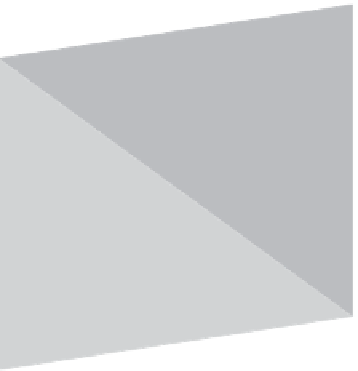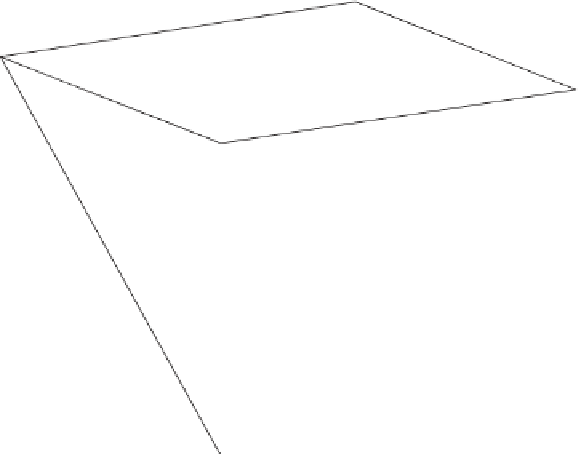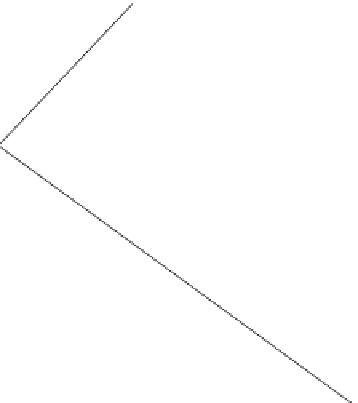Graphics Reference
In-Depth Information
Figure 8.2: A triangle mesh that has the geometry of a cube.
One of the nicest properties of triangle meshes is their uniformity. This uni-
formity allows us to apply various operations to them with guarantees that have
relatively simple proofs; it also makes it easy to try simple ideas. Among the most
interesting operations we can perform on a mesh is
subdivision,
in which a single
triangle is replaced by several smaller triangles in a fairly simple way. (There are
many subdivision algorithms, some of which we'll discuss in Chapter 22.) Typi-
cally subdivision is used to smooth out a mesh that has sharp points or edges, so
as to approach a limit surface that's fairly smooth. Of course, repeated subdivision
operations increase the triangle count substantially; this can have a major impact
on rendering performance.
Another important operation on meshes is
simplification,
in which a mesh
is replaced by another mesh that's similar to it, topologically or geometrically,
but has a more compact structure. If this is done repeatedly, one can arrive at a
collection of simpler and simpler representations of the same surface, suitable for
viewing at greater and greater distances. (A 10, 000-polygon object that covers
only a single display pixel can almost certainly be rendered with
fewer
polygons,
for instance—a simplified mesh is ideal here.) Hoppe [Hop96, Hop98] has studied
this problem extensively.
Meshes are in common use in part because we are familiar with the geometry
of triangles. Not every object in the world is well suited to mesh representation.
Certain shapes, for instance, are characterized by having geometric detail at every
scale (e.g., mica or fractured marble). Others have structure that is uniform in a
way particularly unsuited for mesh representation, like hair, whose bent tubular
structure can be far more compactly represented than with a mesh approximation.
Nonetheless, many research laboratories and commercial companies have
managed to produce a great many successful images using an approach in which
all shapes were approximated by triangle meshes.






